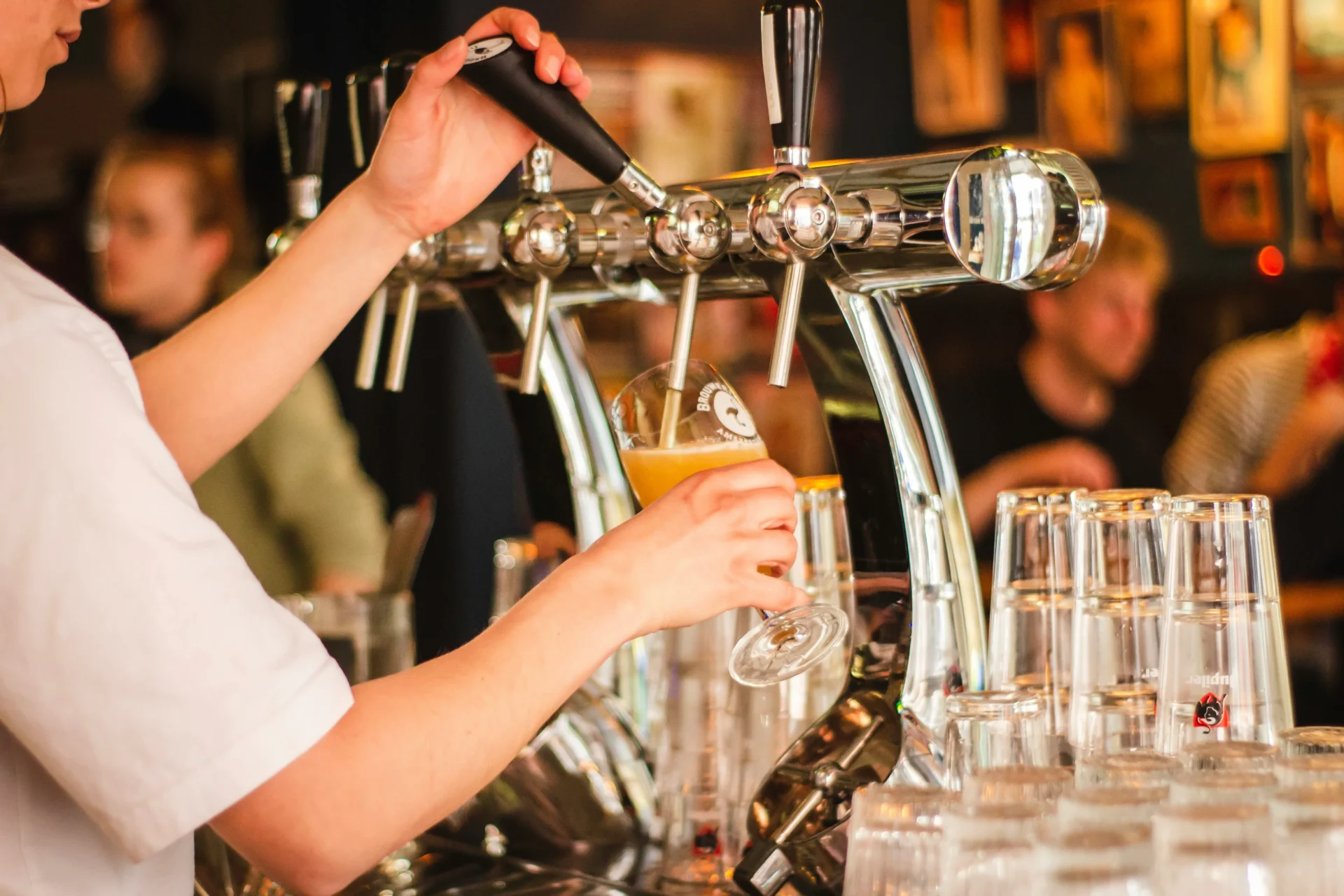The food and beverage industry continues to evolve, and breweries must adapt quickly to stay relevant. With consumer expectations rising and competition expanding, brand visibility has never been more important. That’s where brewery marketing comes in, offering the tools to cut through noise and connect meaningfully with customers. Whether promoting seasonal releases or building local awareness, every decision plays a role in shaping long-term growth. As the craft beer scene becomes more crowded, differentiation must be intentional and strategic. Success begins with a clear vision of the brand and the value it brings to its community. When carried out effectively, marketing turns that vision into a memorable customer experience.
Today’s breweries cannot rely on great beer alone to drive engagement or loyalty. Strong storytelling, digital touchpoints, and local outreach all influence purchasing behavior. By aligning marketing with real consumer habits, breweries create stronger relationships and sustained interest. These strategies do more than drive traffic; they build recognition, reputation, and reach. Each part of the customer experience, from online discovery to taproom visits, must feel unified and memorable. With the right framework, breweries can transform passive audiences into brand advocates. Tapping into current trends in food and beverage also allows breweries to stay relevant and attract evolving consumer interests.
Brewery Marketing Foundations in Brewery Marketing
A cohesive brand identity is the foundation of any effective brewery marketing strategy. From logo design to taproom décor, every detail should reflect the brewery’s values and personality. When visual elements, brand tone, and messaging align, they create a unified experience for customers. In a highly visual industry, standing out is not just about good design; it is also about storytelling. Identity must be communicated clearly across packaging, signage, digital content, and events. When this alignment is achieved, customers feel connected from first impression to lasting loyalty.
Brand identity must also evolve alongside changing trends and consumer behavior. Through brewery marketing, breweries can use audience insights to adjust messaging while maintaining core values. Strategic updates in color palettes, content tone, or even community involvement can strengthen perception without losing authenticity. Customers appreciate brands that stay fresh but familiar, and they often engage more with those that listen and adapt. Highlighting initiatives like sustainable packaging design can further reflect evolving brand values. Consistency and responsiveness work best when balanced with purpose.
More than design, identity includes emotional connection. Customers are drawn to brands that make them feel something, whether it’s a sense of community, creativity, or tradition. Effective storytelling plays a key role in building that emotional bridge between product and person. Every caption, photo, or event should reinforce what the brand stands for. This sense of meaning helps transform casual customers into passionate advocates. When branding is clear, memorable, and heartfelt, it becomes a powerful differentiator in a crowded space. Crafting that connection takes time, but the right strategy makes it sustainable. Effective identity building is also central to any food brand strategy.
Target Market Research and Audience Insight in Brewery Marketing
Understanding the target audience is essential for effective brewery marketing that actually converts. While many breweries appeal to a wide range of consumers, defining core audience segments leads to stronger results. With this clarity, marketing messages can be crafted to resonate with specific needs, preferences, and behaviors. Food and beverage market research provides a deeper view into these behaviors and patterns. Campaigns that are informed by real audience insight tend to be more targeted and efficient. When a brewery speaks directly to its ideal customer, engagement tends to follow.
Demographics are only one part of the equation; psychographics also matter. How customers feel, what they value, and what motivates their behavior should shape each campaign. Brewery marketing enables brands to adjust their tone and content style accordingly. For example, an audience that values sustainability will respond to messages about local sourcing and eco-friendly initiatives. Campaigns designed with these insights connect faster and last longer. Partnering with a skilled beverage marketing agency can enhance this targeting even further.
In a competitive industry, breweries benefit from consistent feedback loops. Surveys, reviews, and digital engagement patterns offer insight into what’s working and what isn’t. When breweries demonstrate that they understand and value their audience, retention improves naturally. Listening to community feedback, especially on platforms that support social media advertising for restaurants, helps ensure continuous improvement. With audience insight in place, every campaign becomes more intentional and impactful. Strong targeting transforms reach into results.
Strategic Execution of a Brewery Marketing Plan
A strong marketing plan gives structure and direction to brewery growth strategies. Without a plan, efforts become scattered and inconsistent, wasting time and budget. The most effective plans begin with a clear goal, whether that’s increasing taproom traffic or promoting a new release. Brewery marketing translates that goal into actionable steps backed by data and structure. Plans should include both short-term campaigns and long-term brand-building tactics. Each part of the plan must support the core identity while meeting audience needs. A roadmap reduces guesswork and aligns team focus.
The best marketing plans follow seven key steps: analysis, objectives, strategy, tactics, budget, execution, and measurement. Tracking outcomes such as taproom visits, online orders, or brand mentions can help refine future campaigns. Tying each campaign to a measurable objective ensures it contributes to larger business goals. Brands that want to scale should consider aligning these steps with a broader food and beverage marketing plan. Structure leads to clarity, which leads to growth. A plan built with intention always outperforms scattered efforts.
Marketing plans should remain flexible as opportunities and trends shift. The ability to pivot quickly is critical in today’s fast-paced market. For example, if local events arise or a product gains unexpected traction, campaigns should be adjusted accordingly. Tools such as scheduling software, analytics dashboards, and CRM systems allow teams to make these adjustments swiftly. Working with experienced partners like a food marketing agency can further enhance planning efficiency. When managed well, a marketing plan becomes the foundation for long-term success.
Enhancing Online Visibility Through Tools in Brewery Marketing
Digital platforms have become critical points of contact for modern breweries. A mobile-friendly website acts as a virtual taproom, sharing events, products, and brand stories. Brewery marketing ensures this digital presence is organized, engaging, and easy to navigate. Optimizing for local SEO, using structured data, and creating helpful landing pages improve search rankings. These technical details work together to help customers find breweries when they search online. Visual consistency, intuitive menus, and compelling calls to action make a website more effective. A clear digital experience mirrors the real-life taproom. Without it, even great beer can remain invisible.
Beyond the site, social signals have a growing influence on brand discovery. Tagged photos, check-ins, and positive reviews act as endorsements in a crowded marketplace. Monitoring these interactions is essential for reputation management. With the right strategy, brewery marketing turns social feedback into marketing assets. For instance, reposting positive customer content increases engagement and builds credibility. A strong digital presence also supports efforts like instagram marketing for restaurants, which aligns well with visual beverage branding. Encouraging user-generated content makes customers feel like part of the brand story. This interaction can lead to stronger loyalty and organic promotion.
Paid ads also help expand reach and awareness. With tools like geo-targeting, breweries can reach potential visitors in nearby areas. Social ads can be used to promote events, new releases, or merchandise. When crafted well, these ads blend in with organic content, offering value instead of disruption. Paid and organic efforts should be part of a balanced digital approach. Platforms like Google and Facebook also allow retargeting of visitors who didn’t convert the first time. Pairing paid media with content strategy makes each campaign stronger. Smart advertising ensures breweries show up at the right time and place, which is critical in the highly competitive food and drink advertising space.
Strengthening Brand Community Through Brewery Marketing
Live events offer breweries a chance to connect in ways digital campaigns cannot. Hosting trivia nights, food truck festivals, or seasonal releases builds energy and attracts new patrons. These gatherings allow the brand to become more than just a product; they become part of local culture. A well-timed event supported by email, social media, and community calendars delivers a coordinated impact. These moments create memorable experiences that customers associate with the brand. Over time, events help deepen emotional connections and grow word-of-mouth reach. A strong events strategy supports the broader brand mission.
Successful events require detailed planning and smart timing. Aligning events with seasonal trends, local festivals, or new product drops increases relevance. Brewery marketing ensures that these events are not just fun but also aligned with business objectives. Countdown posts, teaser videos, and live updates create anticipation and energy. After the event, photos and user content can be repurposed for continued engagement. Even something as simple as a taproom takeover or guest brewer session can generate buzz. Effective integration can also align with larger efforts like restaurant marketing strategies.
Partnerships enhance events further by expanding reach. Collaborating with local vendors, nonprofits, or musicians makes the experience more dynamic. Cross-promotion benefits all partners involved. Marketing supports these collaborations by maintaining consistent messaging across brands. This coordination ensures that everyone communicates the same value. Events can also serve as pilot programs for new offerings or brand directions. Strong partnerships make it easier to scale visibility and community presence. In a competitive market, events rooted in collaboration and strategy help breweries stand out.
Wrap Up
Marketing continues to shape how breweries grow, connect, and compete in a fast-moving food and beverage space. From storytelling to strategy execution, it plays a foundational role in long-term brand relevance. Each campaign, event, and digital touchpoint contributes to stronger identity and customer loyalty. Brands that invest in thoughtful planning see not only higher engagement but also deeper community ties. With clear goals and smart tactics, breweries can grow sustainably while staying true to their mission.
As competition intensifies, those who lead with strategy will stay ahead. Whether refining a brand or launching a new taproom, working with an experienced New York digital marketing agency can help brands tailor their market. To explore how smart strategy can elevate your growth, reach out for a free consultation with our expert team. Learn more on our about page or contact us directly at 855-347-4228 or hello@fishbat.com. The tools are available, and now is the time to put them to work with confidence.



